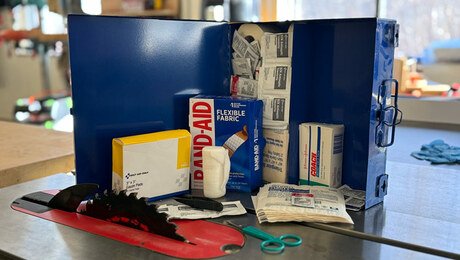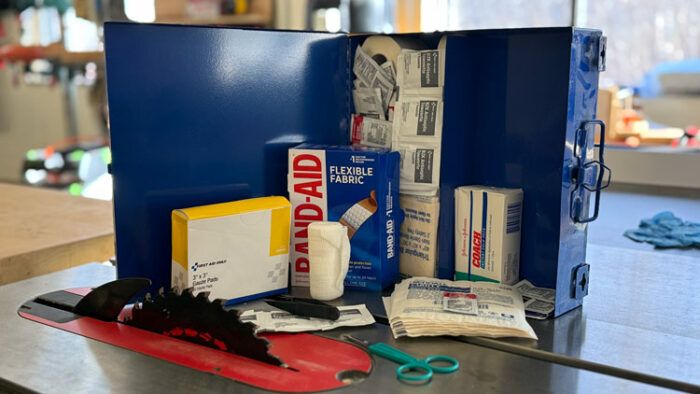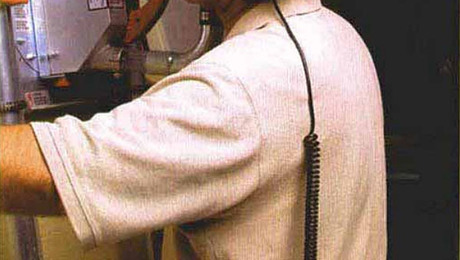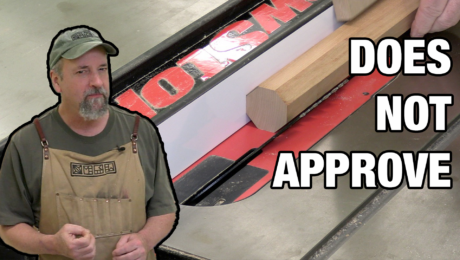“Before we get started, I’d like to take a moment to talk about shop safety. Be sure to read, understand, and follow all the safety rules that come with your power tools. Knowing how to use your power tools properly will greatly reduce the risk of personal injury. And remember this: There is no other more important safety rule than to wear these—safety glasses.”
—Norm Abram
Safety is the first thing drilled into us when we start woodworking. Norm’s quote is a mantra that extends from the woodworking world. Pushes for hearing protection and specifying no loose clothing didn’t come along until later, but his words covered a wide spectrum of the safety concerns.
Most of us work with fast-spinning blades at multiple stages of a project to cut wood, and those blades have no problem cutting your flesh and bone. We learn about push sticks and blocks, jigs, proper tool use, and safer ways to cut to minimize kickback. No loose or dangling clothing or gloves are to be worn when using the power tools. Sharp tools are safe tools, but be careful because the chisel is still sharp enough against flesh as it’s used and will give you a nasty cut quickly if it slips.
Accidents Happen
I think it’s fair to say we’ve all had minor accidents: a splinter in the tip of your finger when handling lumber, a small cut when unfolding a bandsaw blade, maybe brushing a hand against a running belt sander, perhaps even slicking the palm of your hand trying to catch a falling chisel.
Tweezers, a little cleaning of the wound, a bandage, some reflecting on what you did, and you’re back to working.
But are you prepared for the big accidents that we all hope never happen? A board to the gut from table-saw kickback that embeds there, working on the bandsaw and your thumb is closer to the blade when it comes out the back side of your workpiece, something catches on the table saw and fingers are lost to the blade. These and more are the accidents many are not properly prepared to handle.
Know What to Do

When the big accidents happen, do what you can to be prepared. The first and easiest step is to have a first aid kit easily accessible and clearly marked in the shop. Ensure that your family and any friends who might be around know where to find the kit. Be prepared with wound-care solutions, burn treatments, and a trauma kit. Keep the supplies replenished as you use them.
More important than having the kit is knowing how to use the items in the kit—and not only you but those in your household and, if possible, your trusted neighbors who may come to help before EMS can arrive. This is where programs like Stop the Bleed enter the picture.
The Stop the Bleed project is administered by the American College of Surgeons Committee on Trauma. The primary goal of the project is to help educate people to provide basic actions to stop life-threatening bleeding. From my research, they seem to be the prominent group leading public training of this sort in the United States.
Online documentation and videos can be found on their site and elsewhere to provide the how-to steps. However, I don’t believe anything replaces in-person training for this critical knowledge. Stop the Bleed provides a class search page to help locate classes near you. The classes run between one and two hours generally. If you cannot find their training nearby, your local Red Cross, fire department, and hospitals are great options to look for similar training. I also did a quick search for “stop the bleed training [state]” and discovered a nearby class in just a few weeks and signed up for a refresher.
Once you find the resources in your area, take advantage of them. Sign yourself and your family up for the training. Ask your neighbors to attend; after all, severe wounds don’t only happen to woodworkers. If your employer has team-building exercises, propose this training as an activity. Perhaps contact your local lumberyard or woodworker supply store to see if they would be willing to host a training session.
We all hope never to be in a position to need to know this information. If the situation arises, however, learning these skills will help us do our best to help.
Sign up for eletters today and get the latest techniques and how-to from Fine Woodworking, plus special offers.




